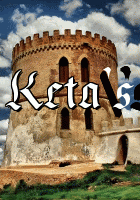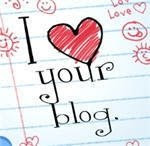The E-Book Royalty Mess: An Interim Fix
February 11, 2011.
To mark the one-year anniversary of the Great Blackout, Amazon's weeklong shut down of e-commerce for nearly all of Macmillan's titles, we're sending out a series of alerts on the state of e-books, authorship, and publishing. The first installment ("How Apple Saved Barnes & Noble. Probably.") discussed the outcome, of that battle, which introduced a modicum of competition into the distribution of e-books. The second, ("E-Book Royalty Math: The House Always Wins") took up the long-simmering e-royalty debate, and showed that publishers generally do significantly better on e-book sales than on hardcover sales, while authors always do worse.
Today, we look at the implications of that disparity, and suggest an interim solution to minimize the harm to authors.
Negotiating a publishing contract is frequently contentious, but authors have long been able to take comfort in this: once the contract is signed, the interests of the author and the publisher are largely aligned. If the publisher works to maximize its revenues, it will necessarily work to maximize the author's royalties. This is the heart of the traditional bargain, whereby the author licenses the publisher long-term, exclusive book rights in the world's largest book market in exchange for an advance and the promise of diligently working to the joint benefit of author and publisher.
Now, for the first time, publishers have strong incentives to work against the author's interests.
As we discussed in our last alert, authors and publishers have traditionally acted as equal partners, splitting the net proceeds from book sales. Most sublicenses, for example, provide for a fifty-fifty split of proceeds, and the standard hardcover trade book royalty -- 15% of the retail price -- represented half of the net proceeds from selling the book when the standard was established.* But trade book publishers currently offer e-book royalties at precisely half what the terms of a traditional proceeds-sharing arrangement would dictate -- paying just 25% of net income on e-book sales. That's why the shift from hardcover to e-book sales is a win for publishers, a loss for authors.
The Pushback
The publisher's standard reply to this -- which we heard yet again after last week's alert -- is a muddle, conflating fixed costs with variable costs. Let's address that before we move on.
For any book, a publisher has two types of fixed costs: those attributable to the publisher's operations as a whole (office overhead, investments in infrastructure, etc.) and those attributable to the particular work (author's advance, editing, design). The variable costs for the book are the unit costs of production. These costs (print, paper, binding, returns, royalty) tell a publisher how much more it costs to get, say, 10,000 additional hardcover books to stores and sell them. The publisher's gross profit per unit (unit income minus unit costs) is the amount against which the author's royalties are traditionally and properly measured. With this sort of analysis, a publisher can compare the gross profitability per unit of, for example, a hardcover to a trade paperback edition.
Investments in technology change nothing. Publishers never argued, for example, that hardcover royalties needed to be cut when they began equipping their editorial and design staffs with expensive (at the time) personal computers, buying pricey computers and software for their designers, tying those computers together with ever-more-powerful Ethernet cables and routers, and hiring support staff to maintain it all. Publishers simply took their share of the gross profits from book sales and applied it to all of their costs, as they always have. What remains after deducting those costs is deemed the publisher's net profit. Similarly, authors take their share of the proceeds of their book sales and apply it to their overhead (food, clothing, shelter, and computer technology) and costs (their labor and out-of-pocket costs to write the manuscript). What remains is the author's net profit.
The proper question is this: how much better off is a publisher if it sells a book, print or digital, than it is if it doesn't? That is what we measured. We then compared that to the author's print and digital royalties per book.
Publisher's E-Gains + Author's E-Losses = E-Bias
Applying standard trade hardcover and e-book terms to Kathryn Stockett's "The Help," David Baldacci's "Hell's Corner," and Laura Hillenbrand's "Unbroken," we found that publishers do far better by selling e-books than hardcovers (realizing "e-gains" of 27% to 77%), while the authors do much worse (suffering "e-losses" of 17% to 39%). Publishers can't help being influenced by the gains; e-bias will inevitably drive their decisions.
Some simplified examples show how e-bias plays out in publishing decisions:
1. Promotional Bias. Assume a publisher is contemplating whether to invest a portion of a book's limited marketing budget in stimulating the sale of digital books (paying for featured placement in the Kindle or Nook stores, perhaps) or in encouraging print sales through a promotion at physical bookstores. Either way, the publisher expects the investment to boost sales by 1,000 copies. A sensible publisher would spend the money to promote digital books, pocketing an additional $1,570 to $4,170 on those sales compared to hardcover sales. Such a decision, however, would cost Ms. Stockett, Mr. Baldacci, and Ms. Hillenbrand $1,470, $1,570, and $670, respectively, in royalties.
2. Print-Run Bias. E-gains of 27% to 77% become irresistible when a publisher looks at risk-adjusted returns on investment, as any businessperson would. Once a book is typeset for print, the publisher must invest an additional $30,000 to have 10,000 hardcover books ready for sale, using the figures from our prior alert. Once the digital template is created and distributed to the major vendors, on the other hand, there is no additional cost to having the book ready for purchase by an unlimited number of customers. Even the encryption fee (50 cents per book, at most) isn't incurred until the reader purchases the book. In this environment a publisher is nearly certain to keep print runs as short as possible, risking unavailability at bookstores, in order to decrease overall risk and maximize the publisher's return on investment.
Publishers, in short, will work to increase e-book sales at the inevitable expense of hardcover sales, tilting more and more purchases toward e-books, and their lower royalties. Publishers, as sensible, profit-maximizing entities, will work against their authors' best interests.
An Interim Solution: Negotiate an E-Royalty Floor
This won't go on forever. Bargain basement e-royalty rates are largely a result of negotiating indifference. The current industry standards for e-royalties began to gel a decade or so ago, when there was no e-book market to speak of. Authors and agents weren't willing to walk away from publishing contracts over a royalty clause that had little effect on the author's earnings.
Once the digital market gets large enough, authors with strong sales records won't put up with this: they'll go where they'll once again be paid as full partners in the exploitation of their creative work. That day is fast approaching, and would probably be here already, were it not for a tripwire in the contracts of thousands of in-print books. That tripwire? If the publisher increases its e-royalty rates for a new book, the e-royalty rates of countless in-print books from that publisher will automatically match the new rate or be subject to renegotiation.
So, what's to be done in the meantime? Here's a solution that won't cascade through countless backlist books: soften the e-bias by eliminating the author's e-loss. That is, negotiate for an e-royalty floor tied to the prevailing print book royalty amount.
Turning again to our last alert for examples, here are the calculations of e-losses and e-gains without an e-royalty floor:
"The Help," by Kathryn Stockett
Author's Standard Royalty: $3.75 hardcover; $2.28 e-book.
Author's E-Loss = -39%
Publisher's Margin: $4.75 hardcover; $6.32 e-book.
Publisher's E-Gain = +33%
"Hell's Corner," by David Baldacci
Author's Standard Royalty: $4.20 hardcover; $2.63 e-book.
Author's E-Loss = -37%
Publisher's Margin: $5.80 hardcover; $7.37 e-book.
Publisher's E-Gain = +27%
"Unbroken," by Laura Hillenbrand
Author's Standard Royalty: $4.05 hardcover; $3.38 e-book.
Author's E-Loss = -17%
Publisher's Margin: $5.45 hardcover; $9.62 e-book.
Publisher's E-Gain = +77%
Here are the calculations with an e-royalty floor:
"The Help," by Kathryn Stockett
Author's Adjusted Royalty: $3.75 hardcover; $3.75 e-book.
Author's E-Loss = Zero
Publisher's Margin: $4.75 hardcover; $4.85 e-book.
Publisher's E-Gain = +2%
"Hell's Corner," by David Baldacci
Author's Adjusted Royalty: $4.20 hardcover; $4.20 e-book.
Author's E-Loss = Zero
Publisher's Margin: $5.80 hardcover; $5.80 e-book.
Publisher's E-Gain = Zero
"Unbroken," by Laura Hillenbrand
Author's Adjusted Royalty: $4.05 hardcover; $4.05 e-book.
Author's E-Loss = Zero
Publisher's Margin: $5.45 hardcover; $8.85 e-book.
Publisher's E-Gain = +62%
While this wouldn't restore authors to full partnership status in the sale of their work, it would prevent them from being harmed as publishers try to maximize their revenues. This is only an interim solution, however. In the long run, authors will demand to be restored to full partnership, and someone will give them that status.
Part 4 of this series will look at online piracy and book publishing.
--------------------------------
*A traditional industry rule of thumb was that the price of a hardcover should be five or six times the cost of production. (John P. Dessauer, Book Publishing: What It Is, What It Does. R.R. Bowker 1974, p. 92). To keep the math simple, let's assume that it's priced at five times the cost of production, that there are no returns, and that the bookseller pays the publisher 50% of the list price for the book. Of the 50% the publisher receives, subtract 20% for the cost of production (one-fifth the retail price) and the net proceeds are 30% of the retail list price. Split that in two, and one arrives at the author's standard hardcover royalty, 15% of the retail list price. (A current rule of thumb is that the cost of producing a hardcover is about 15% of the retail price, but the actual costs vary widely.)
--------------------------------













